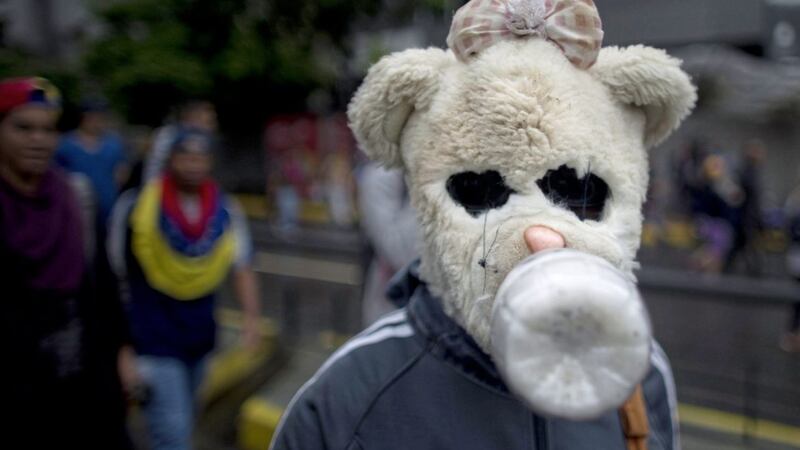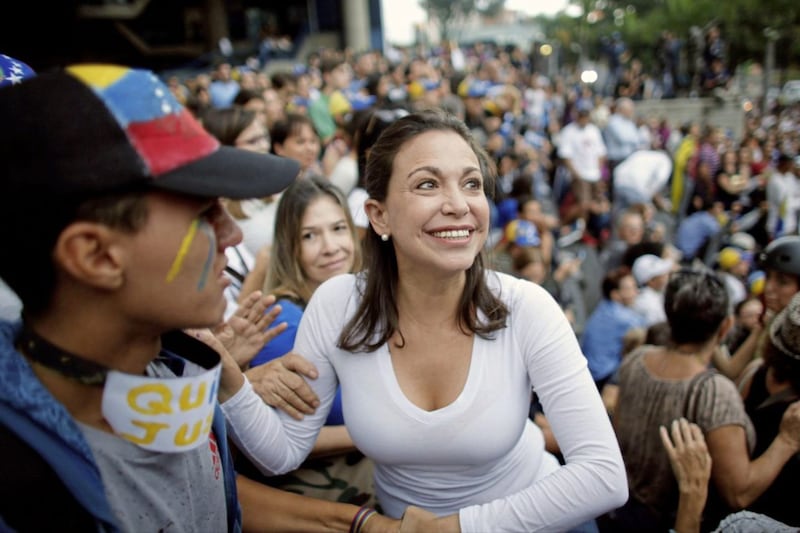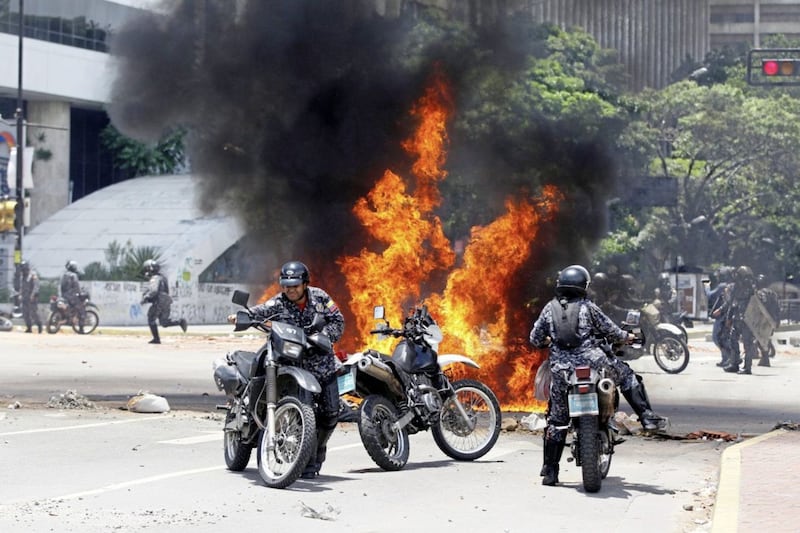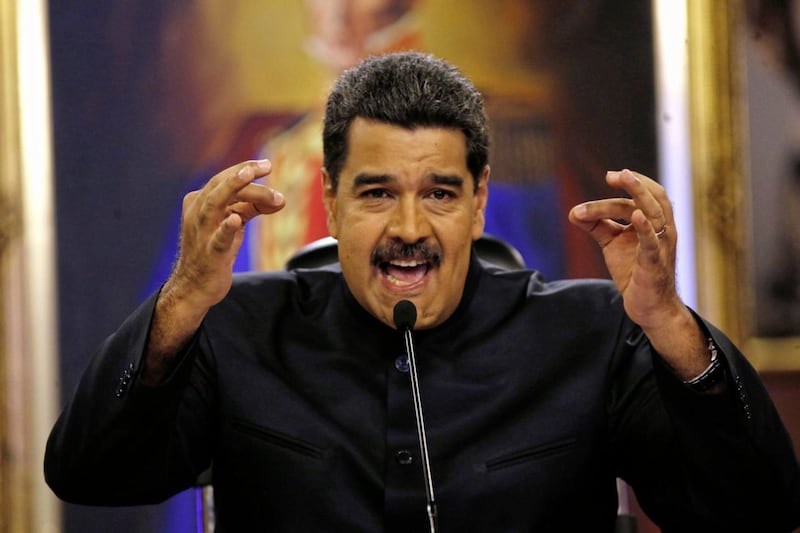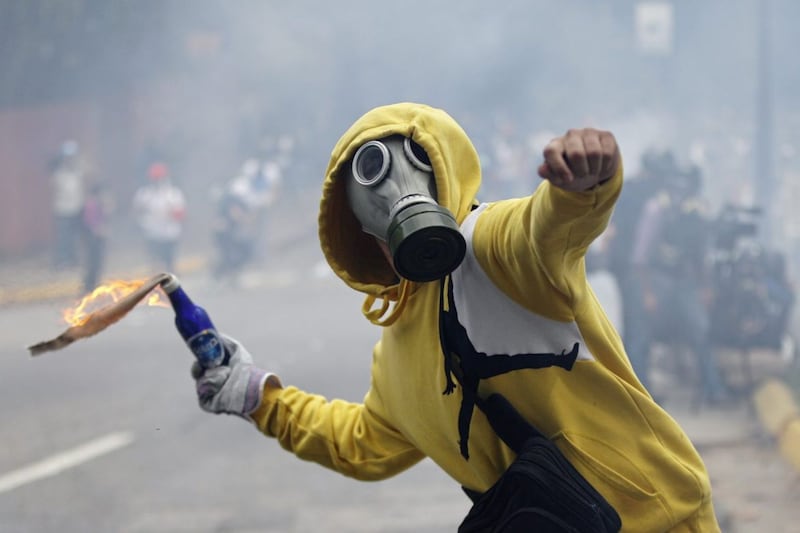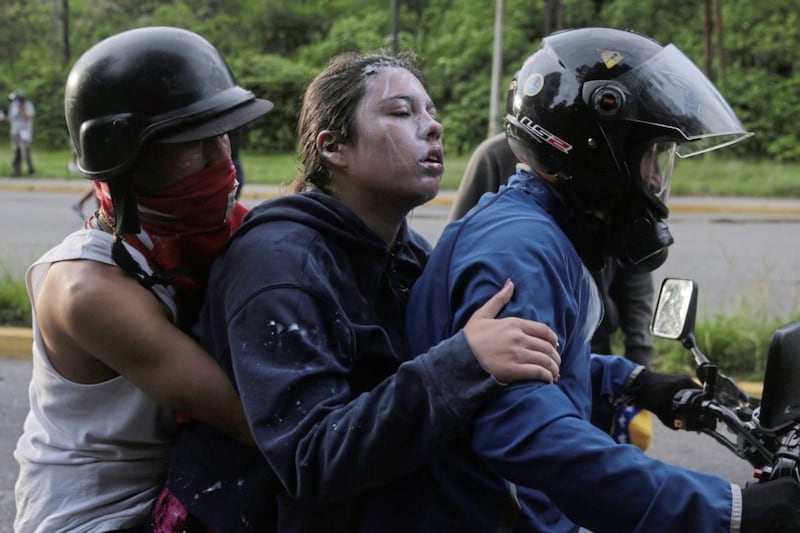Thousands of Venezuelans took to the streets in wealthy eastern Caracas amid a tropical downpour to support a protest movement that is gaining steam even as it turns more deadly.
Officials had confirmed earlier on Thursday that a fifth person had died in the wave of anti-government protests now entering its third week.
The public prosecutor's office says it will investigate the death of 36-year-old Miguel Colmenares. He was shot at a protest in the central city of Barquisimeto on Tuesday.
Gruseny Calderon was killed during the same protest. Congressman Alfonso Marquina said the 32-year-old protester was injured by rubber bullets that pierced his lung and liver.
The protests have also claimed the lives of two college students and a 13-year-old.
The opposition had planned protests in more than 300 towns for Thursday, with the aim of diluting the power of government security forces, but a tropical rainstorm hit turnout.
The Caracas rally was peaceful until the end, when young men clashed with hundreds of riot police who lobbed tear gas to break up the crowd.
As state security forces lean more heavily on tear gas, protesters have begun coming ready with goggles, vinegar-soaked rags and gas masks.
"It's time to stop being poor and hungry. I'm going to stay in the streets until we get rid of this government," graphic designer Rolisber Aguirre (21) said as he marched in the rain toward the centre of the city.
More protests are planned for the coming days, leading up to an April 19 demonstration the opposition is billing as the mother of all marches.
While demonstrations are often held in middle-class neighbourhoods, this most recent wave of unrest for the first time has sparked protests in the slums.
They have historically been bastions of support for the socialist revolution launched nearly two decades ago by late President Hugo Chavez.
Eurasia Group analyst Risa Grais-Targow said this month's protests look more dangerous for the government than similar efforts the opposition has mounted in past years.
"Ongoing opposition protests are generating strong turnouts and spilling over into typical Chavista strongholds, suggesting that social dynamics may be drawing closer to a tipping point," she said.
